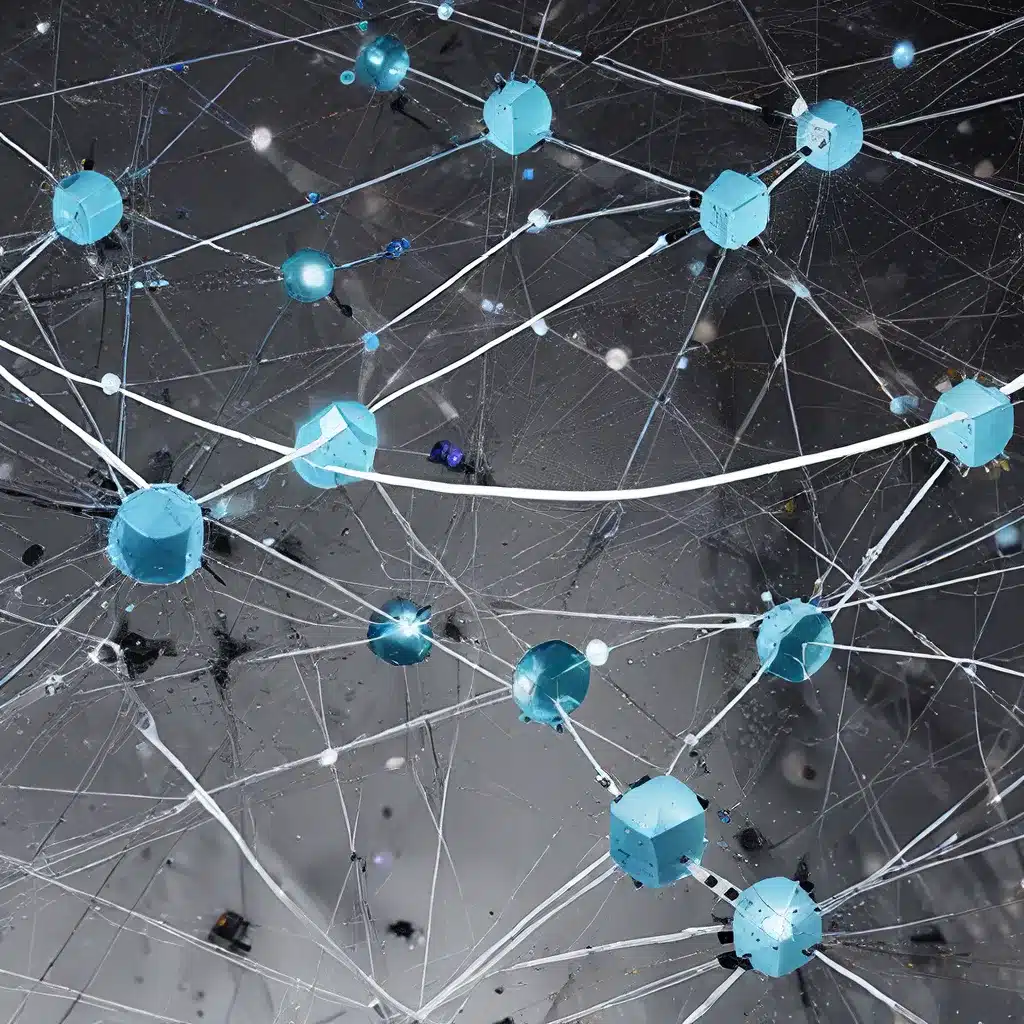
Navigating the Sensor Network Landscape
Sensor networks have become the backbone of the Internet of Things (IoT), enabling a diverse array of applications that transform how we interact with the world around us. From monitoring environmental conditions to optimizing industrial processes, these interconnected systems of sensors and devices are redefining the boundaries of what’s possible in the digital age.
As the IoT ecosystem continues to evolve, the challenge lies in designing sensor networks that can effectively collaborate, share data, and adapt to changing needs. Sensor symbiosis, the concept of fostering synergistic relationships between various sensors and IoT components, is emerging as a crucial strategy for unlocking the full potential of these distributed systems.
In this article, we’ll explore the key considerations and best practices in sensor network design, delving into the realms of IoT applications, security, and energy management. By understanding the intricacies of this dynamic landscape, we can pave the way for a future where sensor networks seamlessly integrate with our daily lives, enhancing our experiences and shaping a more connected world.
Designing Flexible and Adaptive Sensor Networks
At the heart of any successful sensor network lies a well-designed architecture that can accommodate the diverse needs of IoT applications. Modular and scalable approaches are essential, allowing for the seamless integration of new sensors and devices as requirements evolve.
One such network topology that has gained traction is the mesh network, where sensors and devices can communicate directly with each other, forming a resilient and self-healing system. This decentralized structure not only enhances reliability but also facilitates dynamic resource allocation and load balancing across the network.
Another emerging trend is the edge computing paradigm, where processing and decision-making capabilities are pushed closer to the sensors and devices themselves. This edge-centric approach reduces latency, improves responsiveness, and mitigates the strain on centralized cloud infrastructure, making it particularly well-suited for time-critical IoT applications.
Sensor network design must also consider the unique requirements of different IoT use cases, from environmental monitoring to industrial automation. Adaptive algorithms and machine learning techniques can enable sensor networks to self-configure, optimize, and respond to changing conditions in real-time, ensuring continuous and reliable data collection.
Harnessing the Power of IoT Applications
The potential for sensor networks in IoT applications is vast and ever-expanding. Smart cities, for instance, leverage sensor-enabled infrastructure to monitor and manage traffic, energy consumption, waste management, and public safety, ultimately enhancing the livability and sustainability of urban environments.
In the realm of industrial automation, sensor networks play a crucial role in predictive maintenance, quality control, and process optimization. Continuous monitoring of equipment and production lines can identify anomalies, predict failures, and optimize resource utilization, leading to increased efficiency and cost savings.
The healthcare sector has also embraced the transformative power of sensor networks, with applications ranging from remote patient monitoring to assisted living. Wearable sensors, smart beds, and ambient monitoring devices can track vital signs, detect falls, and alert caregivers in real-time, improving patient outcomes and quality of life.
As IoT technologies continue to evolve, we can expect to see sensor networks integrated into an even wider array of applications, from precision agriculture to smart energy grids and beyond. The key lies in designing flexible, adaptable, and collaborative sensor systems that can seamlessly integrate with the diverse needs of modern society.
Securing the IoT Ecosystem
The proliferation of sensor networks and IoT devices has also brought about security concerns that must be addressed. Vulnerabilities in network connectivity, data transmission, and device authentication can expose sensitive information and critical infrastructure to cyber threats.
To safeguard the IoT ecosystem, robust security protocols and encryption techniques are essential. Adopting end-to-end encryption for data communication, implementing strong authentication mechanisms, and regularly updating firmware and security patches can significantly reduce the risk of unauthorized access and data breaches.
Furthermore, decentralized approaches to security, such as blockchain-based solutions, can enhance trust and transparency within sensor networks. Distributed ledgers can record sensor data and transactions, verifying the integrity of information and mitigating the risk of tampering.
Optimizing Energy Efficiency in Sensor Networks
Energy management is a critical consideration in sensor network design, as sensors and IoT devices are often deployed in remote or resource-constrained environments.
Strategies for improving energy efficiency include adopting low-power hardware components, implementing duty-cycling techniques to minimize idle time, and leveraging energy harvesting technologies that capture ambient energy sources, such as solar, wind, or vibration.
Sensor networks that prioritize energy efficiency not only reduce operational costs but also expand the reach and accessibility of IoT applications, particularly in remote or off-grid settings.
Embracing the Future of Sensor Networks
As the IoT landscape continues to evolve, sensor networks will play an increasingly pivotal role in shaping our connected world. By fostering collaboration and symbiosis between sensors, devices, and systems, we can unlock new possibilities for innovation and transformation across a wide range of industries.
The key to success lies in designing flexible, adaptive, and secure sensor networks that can seamlessly integrate with diverse IoT applications. By prioritizing energy efficiency and exploring emerging technologies, we can empower sensor networks to thrive in even the most challenging environments.
As we navigate the future of sensor networks and IoT, it’s clear that collaboration and symbiosis will be the driving forces behind the advancements that transform our lives and reshape our world. By embracing this vision, we can build a more connected, sustainable, and innovative future for all.